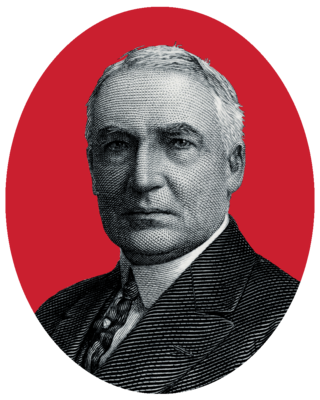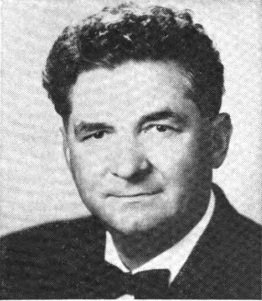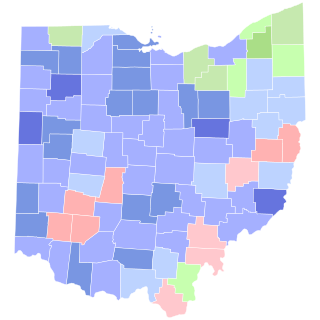
James Middleton Cox was an American businessman and politician who served as the 46th and 48th governor of Ohio, and a two-term U.S. Representative from Ohio. As the Democratic nominee for President of the United States at the 1920 presidential election, he lost in a landslide to fellow Ohioan Warren G. Harding. His running mate was future president Franklin D. Roosevelt. He founded the chain of newspapers that continues today as Cox Enterprises, a media conglomerate.

The 1920 Republican National Convention nominated Ohio Senator Warren G. Harding for president and Massachusetts Governor Calvin Coolidge for vice president. The convention was held in Chicago, Illinois, at the Chicago Coliseum from June 8 to June 12, 1920, with 940 delegates. Under convention rules, a majority plus one, or at least 471 of the 940 delegates, was necessary for a nomination.

The 1914 United States Senate elections, with the ratification of the 17th Amendment in 1913, was the first time that all seats up for election were popularly elected instead of chosen by their state legislatures. And thus it became the first time that they were generally scheduled on Election Day to coincide with the U.S. House elections. The 32 seats of Class 3 were contested in regular elections in 1914. Special elections were also held to fill vacancies. These elections occurred in the middle of Democratic President Woodrow Wilson's first term.

The Progressive Party was a third party in the United States formed in 1912 by former president Theodore Roosevelt after he lost the presidential nomination of the Republican Party to his former protégé turned rival, incumbent president William Howard Taft. The new party was known for taking advanced positions on progressive reforms and attracting leading national reformers. The party was also ideologically deeply connected with America's indigenous radical-liberal tradition.

The 1924 United States presidential election in California took place on November 4, 1924, as part of the 1924 United States presidential election. State voters chose 13 electors, or representatives to the Electoral College, who voted for president and vice president.

The 1920 United States presidential election in California took place on November 2, 1920, as part of the 1920 United States presidential election in which all 48 states participated. California voters chose 13 electors to represent them in the Electoral College via a popular vote pitting Democratic nominee, Governor James M. Cox of Ohio and his running mate, Assistant Secretary of the Navy Franklin D. Roosevelt of New York, against Republican challenger U.S. Senator Warren G. Harding of Ohio and his running mate, Governor Calvin Coolidge of Massachusetts.

The 1926 United States Senate election in Illinois took place on November 2, 1926.

The 1914 United States Senate election in Colorado took place on November 3, 1914. It was the first direct U.S. Senate election in Colorado following the ratification of the Seventeenth Amendment. Incumbent U.S. Senator Charles S. Thomas, a Democrat, who was first elected by the state legislature to fill a vacancy in 1913, ran for re-election to a full term.

The 1924 United States presidential election in Texas took place on November 4, 1924, as part of the 1924 United States presidential election. State voters chose 20 representatives, or electors, to the Electoral College, who voted for president and vice president.

The 1944 Ohio gubernatorial election was held on November 7, 1944. Democratic nominee Frank Lausche defeated Republican nominee James Garfield Stewart with 51.82% of the vote.

The 1916 United States Senate election in New York was held on November 7, 1916. Incumbent Democratic Senator James O'Gorman chose not to seek re-election. Republican William M. Calder was elected to a succeed O'Gorman, defeating Democrat William F. McCombs.

The 1914 Colorado gubernatorial election was held on November 3, 1914. Republican nominee George Alfred Carlson defeated Democratic nominee Thomas M. Patterson with 48.67% of the vote.

The 1912 North Dakota gubernatorial election was held on November 5, 1912. Republican nominee L. B. Hanna defeated Democratic nominee Frank O. Hellstrom with 45.45% of the vote.

The 1916 Illinois gubernatorial election was held on November 7, 1916. Incumbent Democratic Governor Edward Fitzsimmons Dunne was defeated by Republican nominee Frank Orren Lowden.

The 1918 Ohio gubernatorial election was held on November 5, 1918. Incumbent Democrat James M. Cox defeated Republican nominee Frank B. Willis in their third consecutive contest with 50.62% of the vote.

The 1916 Ohio gubernatorial election was held on November 7, 1916. Democratic nominee James M. Cox defeated incumbent Republican Frank B. Willis in a rematch of the 1914 election with 48.40% of the vote.

The 1912 Ohio gubernatorial election was held on November 5, 1912. Democratic nominee James M. Cox defeated Republican nominee Robert B. Brown with 42.38% of the vote.

Elections were held in Illinois on Tuesday, November 3, 1936.

The 1914 South Dakota gubernatorial election was held on November 3, 1914. Despite a close election in 1912, incumbent Republican Governor Frank M. Byrne defeated Democratic nominee James W. McCarter, an Edmunds County Judge, with 50.07% of the vote. Coincidently, Bryne's Democratic opponent in 1912, Edwin S. Johnson, was elected the same year to represent South Dakota in the United States Senate.

A general election was held in the U.S. state of Wyoming on Tuesday, November 3, 1914. All of the state's executive officers—the Governor, Secretary of State, Auditor, Treasurer, and Superintendent of Public Instruction—were up for election. Governor Joseph M. Carey declined to seek re-election to a second term, and Democratic State Senator John B. Kendrick was elected as his successor. Republicans, however, won all of the other statewide executive offices, including picking up the Superintendent's office.





















